Chicago is the most vertical city I’ve ever visited. One cannot possibly capture the city through a photograph without shooting their camera vertically, fully realizing the skyscrapers that tower the metropolis’s true facade over the Chicago River and Lake Michigan, these architectural giants’ light impressing itself on the vertoramic film staged behind the lens, stamped in the cortices of the Midwest Illinois memory. Even when the city can seem panoramic or horizontally kinetic, it is miraculously and meticulously layered in such a way to continue to honor this commitment to the vertical; the Chicago Transit Authority’s public transportation trains are elevated above the one-way streets of the city (earning it the affectionate nickname “The ‘L’”), looping and soaring above all of the traffic between the concrete and glass of downtown towers. When walking around in the city, you’re bound to look up towards the yellow steel tracks at some point, your eyes attracted by the clanging and banging of the trains’ sparkling wheels; and that’s only if you’re not already on these magnificent vessels. When you are on them, you’re sandwiched between brick and steel, looking up and down to get a lay of the land and sky, to perhaps see which of these art deco masterpieces are adorning your commute through the city.
It’s been 15 years since I last visited Chicago; I was 12 years old in 2009, going on what was our semi-annual spring break family vacation that only progressing age has since helped me better appreciate experiencing in my childhood more and more. Chicago was the first major US city I visited that left a lasting impression on me, and inspired a love for traveling domestically within the country; it was far enough away from the West Coast to feel like a completely new culture foreign from my own, while still retaining a holistic American-ness that felt familiar, warm, and welcoming, as if I was unlocking some new dimension and facet of being an American by visiting and seeing this great place. I reveled in walking the city’s Magnificent Mile on Michigan Avenue and admiring the deluge of skyscrapers crowding the skyline, trying the rich marinara of deep dish pizza for the very first time, experiencing the bitter cold March wind in a proper Midwestern climate, escaping that cold in the Chicago Institute of Art and admiring Hopper’s Nighthawks, and even surveying the pavement of South LaSalle Street with my brother and my dad as we said to ourselves with gasped, nerdy delight, “This is where they flipped the truck in The Dark Knight”, a movie that was just under a year old at the time.
I returned to Chicago for a number of reasons, some rooted in a similar desire to recapture that charm and love for domestic travel that ignited within me in this city 15 years ago, and others to embrace and cater to new interests I’ve developed over the years with which the city could continue to court me. With this being Breanna’s first time visiting Chicago, a part of me wanted to impart that childhood love for the city to her, taking her to all of the familiar places and activities I had done my first visit, which meant taking her to the famed architecture tour, experiencing Chinatown, and finding spots where they filmed Christopher Nolan’s The Dark Knight Trilogy. But another part sought to experience this city together anew, refusing to boil down the city to sentimental memory, and instead actively pursuing and perusing it as one that can activate our many loves and interests.
Music
Since I didn’t get a chance to do this last time as a dependent pre-teen, I wanted to take the chance to check out more of Chicago’s music scene. The day we flew in, we checked JamBase and discovered that none other than Chicago-based Wilco were playing their second of two shows at The Salt Shed, a new outdoor venue that sits a little north of the city along the riverside. Seeing Wilco in concert has always been an admittedly mild desire of mine since they seemed to tour all the time and thus were not the rarest show to catch. Plus, I only really knew three or four of their albums (Sky Blue Sky being one of my favorites of all time), and with Wilco having such a massive catalogue, it was hard to really know if they’d perform the songs I’d like. Regardless, it almost seemed like I had to see them in their hometown of Chicago, and I liked Jeff Tweedy’s style and approach to music enough to trust that I’d have a good time regardless of familiarity, so we got tickets. As it turned out, I was generously rewarded for my interest. Song after song, I progressively became more and more excited as they played through favorites such as “War On War”, “If I Ever Was A Child” (the song that first got me into them in college), and Sky Blue Sky favorite “Side With The Seeds”. Then, they finally did it; they opened their next song with the all-too-familiar arpeggios of “Either Way”, the seemingly elusive opening track from Sky Blue Sky that I genuinely didn’t think they’d play, followed by my absolute favorite and The Bear track “Impossible Germany” to cap off a perfect setlist. I unknowingly bought last-minute tickets for the most perfect Wilco show I could ask for, and I simply couldn’t believe hearing Jeff Tweedy’s clean voice reverberating down the river and across the Chicago skyline, with Willis Tower in full view.
I also took the time to check out a Chicago house show at Spybar nightclub (per the recommendation of my friend Bryan, who’s been living there for 3 years now). Since moving to New York, I’ve developed a rapidly increasing fascination with club culture and the local electronic music scenes of major cities, ranging from Detroit techno and whatever New York/Brooklyn has been doing to, of course, the pioneering brand of Chicago house music. Granted, I always liked house music growing up, but it was limited to whatever Daft Punk managed to popularize into the radio airwaves during my formative adolescent years. In the past couple of years, I’ve been diving deeper into the house music catalogue, studying its origins as a means of retreat and solace for disparaged and displaced disco and soul fans mostly consisting of the black and queer community, diving into catalogues of pioneering DJs such as Frankie Knuckles, Mr. Fingers, and Cajmere. I found out that Spybar was housing a Juneteenth event hosted by Warehouse, the original venue founded by Robert Williams that originated the genre, and promptly got a ticket. At Spybar, I saw local DJ Blesstonio open up his set with some driving drum and bass basics. Throughout the night, several dance circles formed, where experienced dancers engaged in “house dancing”, a particular variation of shuffling that was an improvised set of rehearsed moves. Towards the end of his set, Blesstonio began playing grooving disco dance beats with syncopated precision, sampling a Donna Summer’s “Heaven Knows” and manipulating her vocals into gospel-like choruses backed by a sweeping, dance-like string section and a grooving bass line to form a synthesized masterpiece of EDM. I got the impression that Blesstonio, too, wanted to evaluate the true origin and euphoric liberation of house music by exploring and unearthing its disco roots with this set, stripping the songs down stem by stem, and it certainly connected with me at a near-spiritual level. I won’t ever forget that night that we danced under the heavenly aura of house music.
.
Food (and I suppose TV?)
I ate very well this trip. Being huge fans of The Bear, Breanna and I couldn’t pass up the opportunity to give ourselves a self-guided food tour of a good majority of the restaurants featured in and filmed for the show. This tour took us to, in no particular television order (and in order of when we visited), Kasama for their Michelin-star Filipino tasting menu, Margie’s Candies for their sundaes, Mr. Beef for their Italian beef sandwiches (and to see the actual alleyway where Carmie gets a panic attack and the front facade where Richie fires a gun), Pequod’s Pizza for their deep dish (that Richie’s stage restaurant serves), Ever for their Michelin-star American tasting menu (the restaurant Richie stages at), Kasama (again) for their breakfast sandwich and pastries, and Lao Peng You 老朋友 for their Taiwanese-Chinese dumplings and 面包. Outside of The Bear, I also tried Chi Quon Bakery, Chinatown’s oldest Cantonese/Hong Kong bakery in the area, Hing Kee for their soup dumplings, Dove’s Luncheonette per Bryan’s recommendation on Mexican-inspired diner food, Au Cheval for a solid, perfect-forming burger, Fatso’s Last Stand for perhaps the best char-grilled Chicago dog in the city, and Lou Malnati’s and Giordano’s for other deep dish samplings. I’ll perhaps write another blog post of everything I ate in great detail, particularly with these tasting menus, but I generally like to summarize my culinary experience in Chicago as a true personal assessment of the “art” in “culinary arts”. Each restaurant I went to, I got the sense of a philosophical execution and gastronomical expression that went into their respective dishes; Kasama’s emphasis on familiar sentimental cooking with their radical takes on traditional Filipino dishes was as palpable as the peanut flavors of their kare kare and the tamarind chip of their soupless take on sinigang, while Ever’s 9-course menu urged a reevaluation of every individual component and texture that made up each of its clean, molecular confections and concoctions, encouraging exploration and curiosity in each of their self-guided dishes. Even the different characteristics of each deep dish pizza I had spoke to the locality; caramelized crusts at Pequod’s were markedly textured and flavored differently compared to the more cornbread feel of Giordano’s and Lou’s (the latter having gooier cheese), and I can already envision the Reddit boards arguing which one was indeed the better pizza (my local friend recommended Pequod’s, for what it’s worth.).
Visits
I’ll admit, this trip was also planned around baseball. The San Francisco Giants were going to be at the Chicago Cubs’s Wrigley Field that week of June, so we deliberately booked our flight and hotel to coincide with that week (which ended up being the hottest of the month in what locals described as a “heat dome”). Back in 2009, I saw just the outside of Wrigley during the offseason, and my dad asked a field attendant to take his iPhone 3G to take a picture of the ivy wall for him. When he got his phone back, a wall of turd-brown leaves graced his bubbly phone screen. Now that I’ve been in full swing of my self-proclaimed #baseballsummer3, it was time I kick it off with another new park by giving Wrigley a proper visit. As we made our way through the crowds, Bryan asked me, “When you’re watching your favorite team visiting at a stadium, would you rather your team win or that the home team wins so you can get the ‘full’ experience of seeing a win at the stadium with the fans?” Welp, I think one of us jinxed it, because, though I got to see my second Giants grand slam of the season, the Giants lost by one run, and I had to drown my disappointment under the blaring chants of the groovy win-fight song “Go Cubs Go!” as their traditional “W” flag unfurled above the park’s center field. And all things considered, I did get the full Wrigley experience; I saw a ball get stuck in the Ivy and become a ground-rule double, I saw an unassisted double play in one of the wackiest shortstop plays I’ve ever seen, and a grand slam by Jorge Soler that shot to the bleachers. That’s all I can ask for whenever I spend the money on a game ticket.
Being back in the Art Institute of Chicago again with a newer palette was notably a whole new experience for me. The first time I visited, I didn’t have as much of an appreciation for art, but I found it really neat to be seeing famous paintings such as Hopper’s Nighthawks, Wood’s American Gothic, and Seurat’s A Sunday Afternoon on the Island of La Grande Jatte in person. It was just as neat this time around too, but, having lived in San Francisco, LA, and now New York, how I assess and experience the visual arts has perhaps changed a bit, being in close proximity to the LACMA, SFMOMA, New York’s MOMA, the Guggenheim, and the Whitney with semi-frequent visits and ever-changing exhibits. Instead of thinking about how cool and noir-like Nighthawks looked, I instead thought about how empty the painting looked, a signature characteristic of Hopper’s that I began to take notice of at The Whitney. I thought more of the stories behind the paintings I saw, connecting with more of the relatively adult themes of isolation, loneliness, and the downright absurd that I did before (did you know there’s a monkey on a leash in Seurat’s Sunday Afternoon?).
We also made the trip out to Oak Park to see both Frank Lloyd Wright’s first home and studio (his residence from 1889 to 1909), and Ernest Hemingway’s birthplace (only visiting the former). Seeing Wright’s home and studio was particularly cerebral in its experience; there’s the first layer of fundamentally understanding his style and approach to architecture and design to his spaces and furniture, and there’s the second added layer to how he used his creativity to cater to his own personal preferences and stylings. I particularly enjoyed seeing the ornate and abstract grills and windows he’d design and place on his own lighting furnishings and skylights, particularly for his dining room and play room for his children. Much of his nature-inspired work and desire for earth tones and straight edges reminded me of some of the early predecessors of what would eventually become modern American architecture. Also, Wright was definitely a weeaboo - he essentially took inspiration from Japanese architecture, art, and clothing, and incorporated them into his own designs in shape, form, and function.
And, of course, there was the obligatory tourist-y stuff; the architecture tour to hit the ground running and reintroduce us to every building in the city, dipping into the cold, cold waters of Lake Michigan on a scorching, partly cloudy day, and biking along the lakeshore up to Lincoln Park to check out their free zoo. Go-to favorites and fragments of my childhood to revisit again now under the hot Chicago sun as opposed to a Windy City breeze, with Breanna and I engaging in an act of living and re-living, in separate and shared spheres of memory formation.
Thoughts
On the first night of our time in Chicago, I finished Illinois-native David Foster Wallace’s Infinite Jest, a hulking, 1000+ page stream of consciousness novel that juggles multiple seemingly random and mundane storylines that includes a dysfunctional family running a tennis academy, a Boston-area rehab clinic, and a group of insurrectionist assassins on wheelchairs, leaning into sarcastic commentary and absurdity to criticize and satirize the broken nature of entertainment, addiction, and happiness, and ultimately how much capitalism has commodified the joyful melancholy that leashes our days. One particular sideplot and ultimate MacGuffin of the book is the existence of a recorded VHS-like tape titled Infinite Jest that is said to be so addictive and entertaining and attention-sucking that it incapacitates and ultimately kills anyone who views it from hunger and exhaustion.
While the titular recording is ultimately meant to be an ironic literary tool to ridicule the commodification and weaponization of media, I can’t help but relate to and understand the addictive nature of being entertained and experiencing some sort of joy as Infinite Jest’s powerful metafiction retains. If I didn’t have other obligations in the way, I could almost see myself wanting to stay in Chicago forever, my eyes forever glued to the skyline, entranced by the scents permeating across the lakeside metropolis. Chicago is truly a city of infinite joys for me and Bre, a perfect intersect of our love for media, arts, and culinary engagement. Everything here seems to retain an underlying and undying design philosophy, engineered to perfect the senses with anyone who has the privilege to be graced by the city’s kinetic and sensory charm. When I am walking the streets and riding the rails across Chicagoland, I desire to look and see and hear and taste and feel more, to explore and perhaps unearth the source of that infinite joy, this concept that a city can exist in multitudes of interests and fully express out the zesty flesh of the lakeside fruits blooming across its glimmering forest.




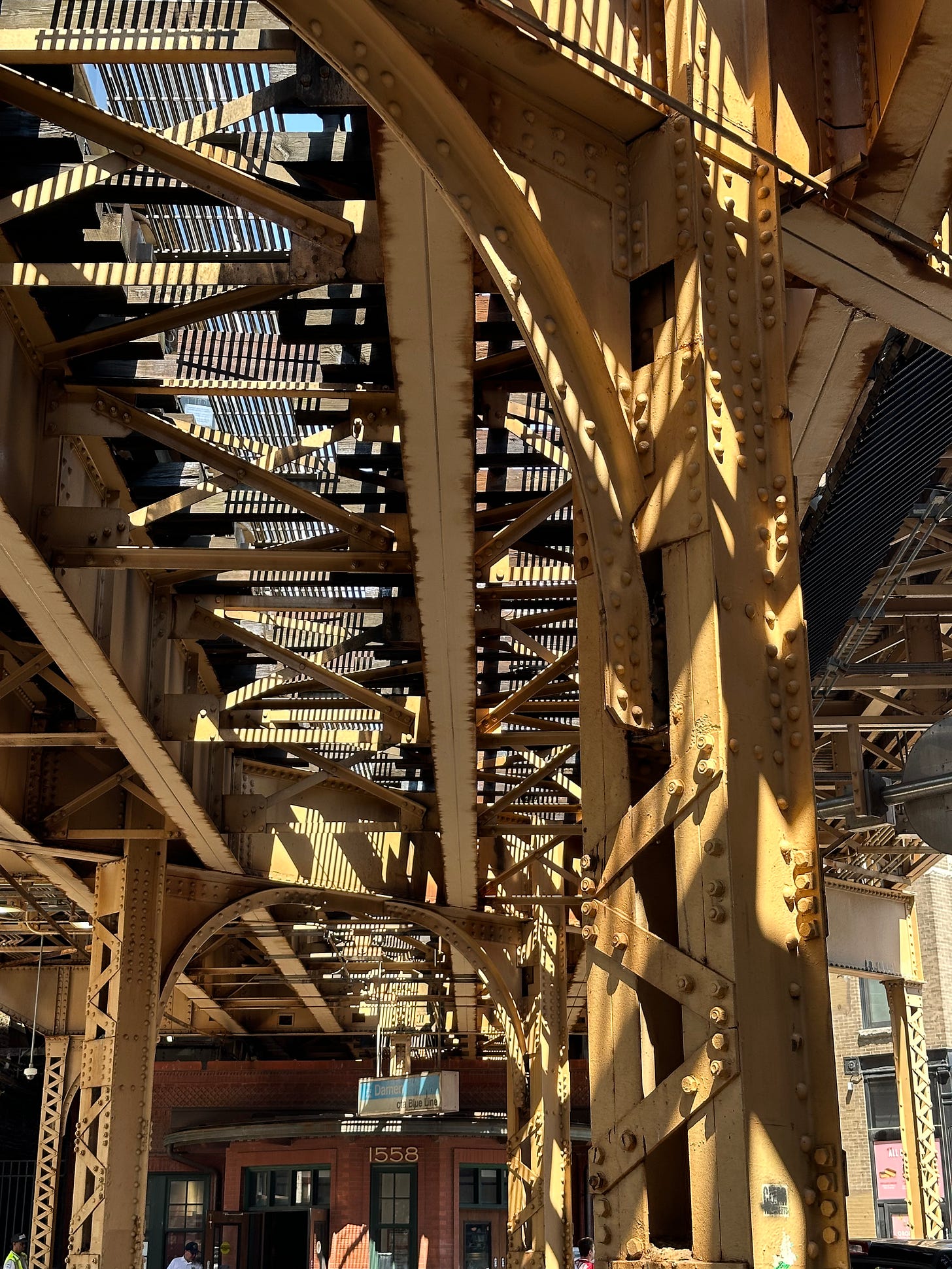
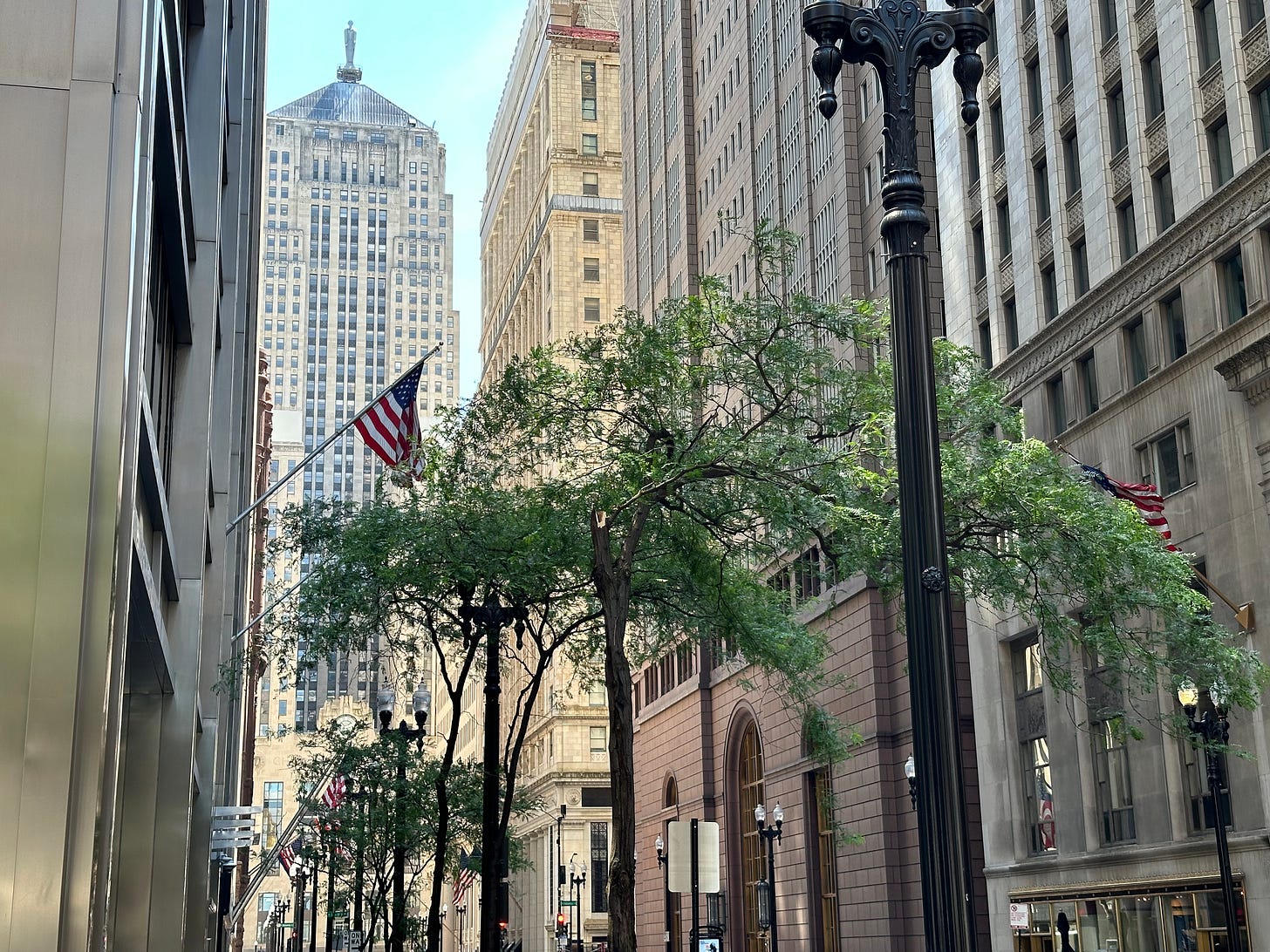




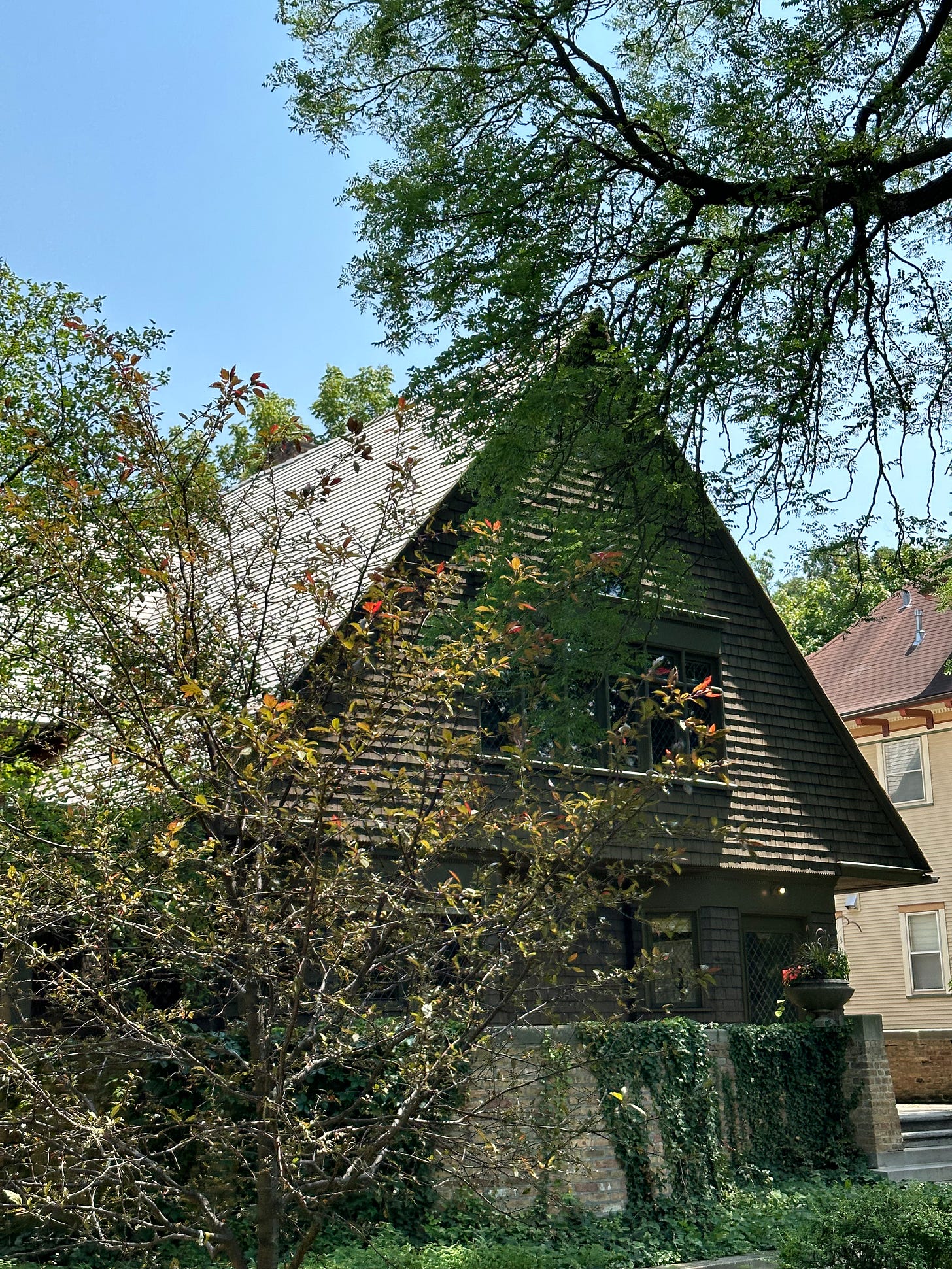
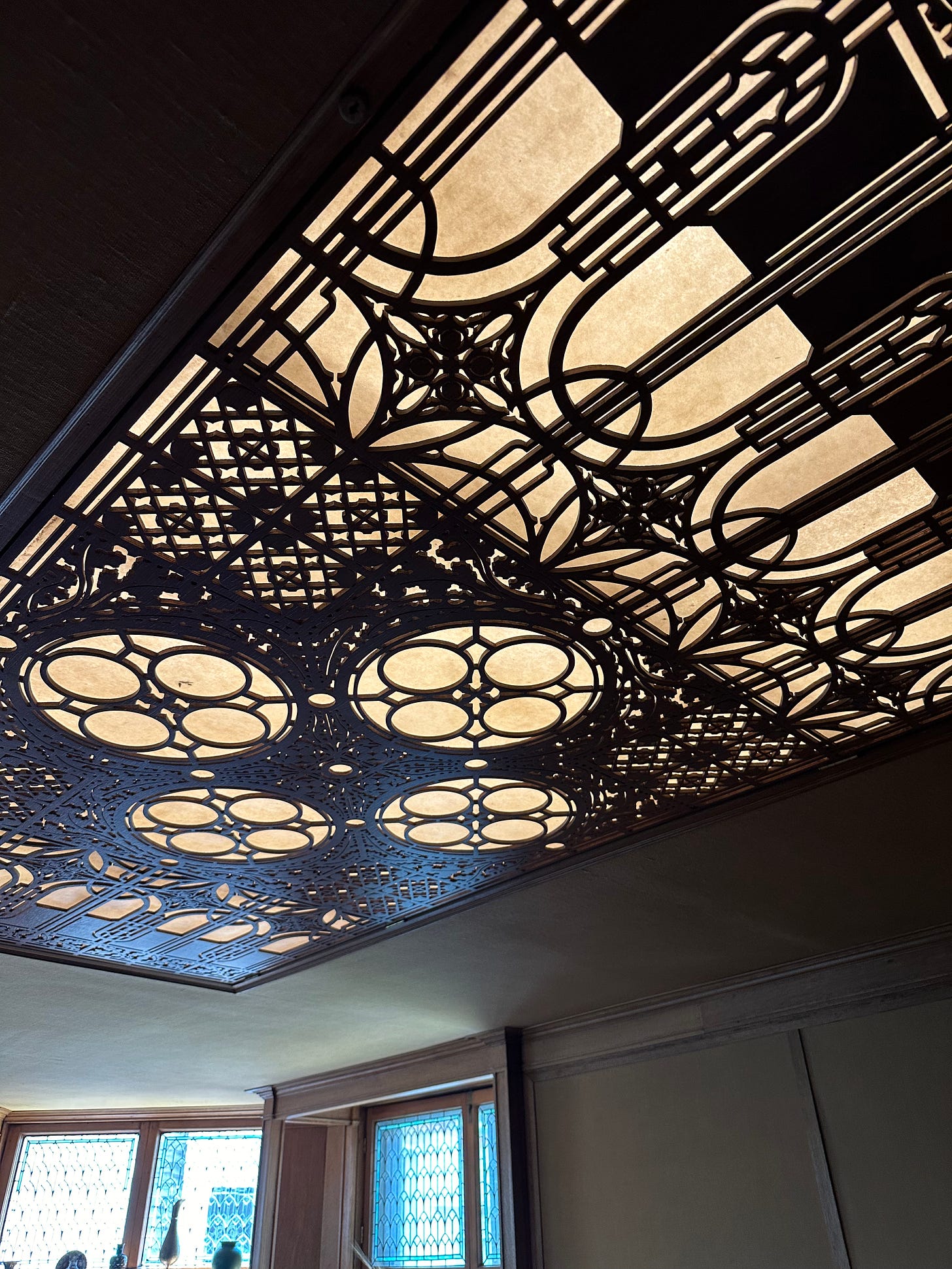


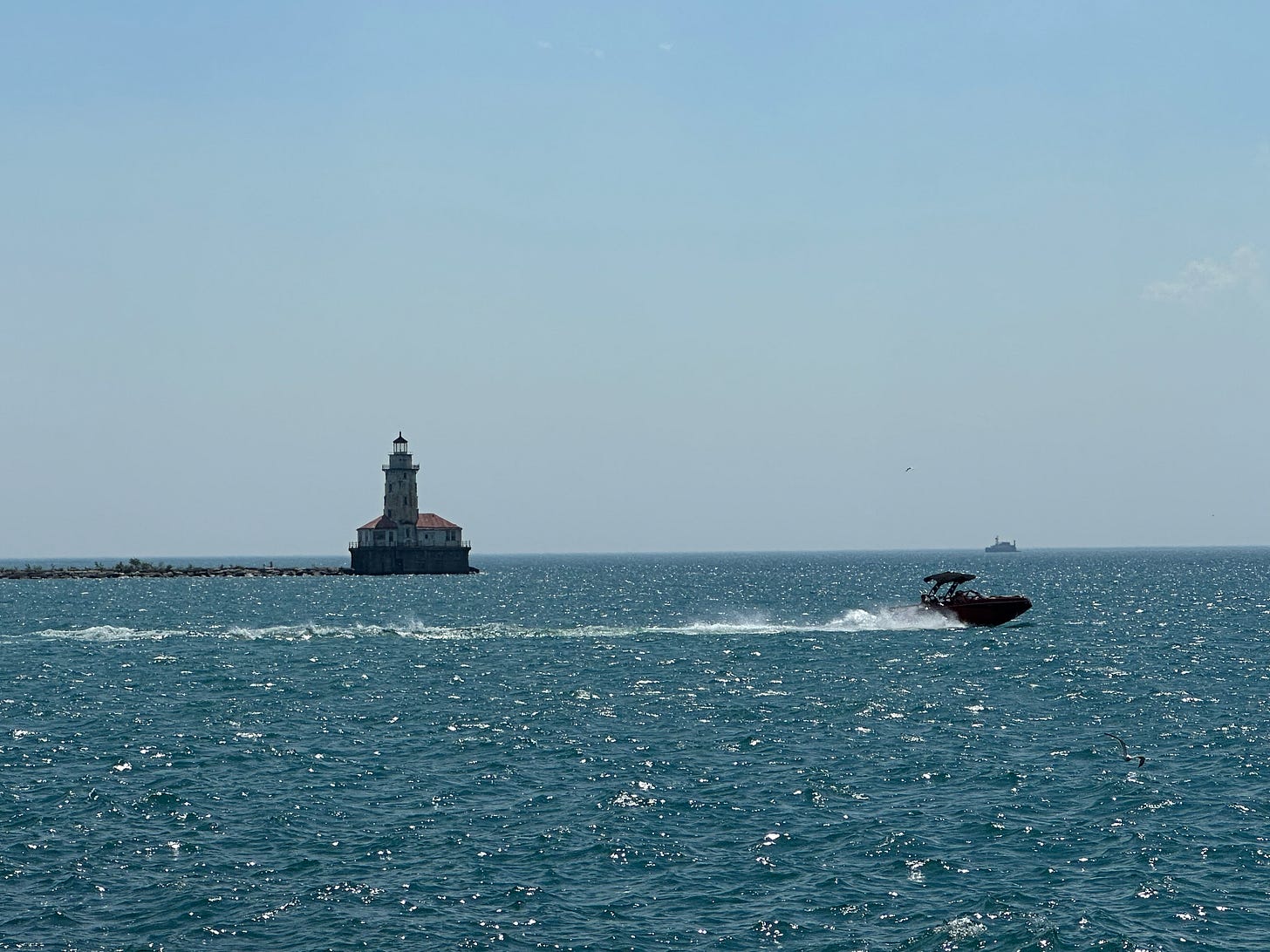
Ahh!! Loved reading about your love for Chicago. I’m dying that you called Frank Lloyd Wright a weeaboo 😭
Great to hear you found infinite joy in Chicago. It’s my 2nd favorite US city to revisit, after NYC. Sounds like you took in a lot of what the city offers and they do offer a lot.